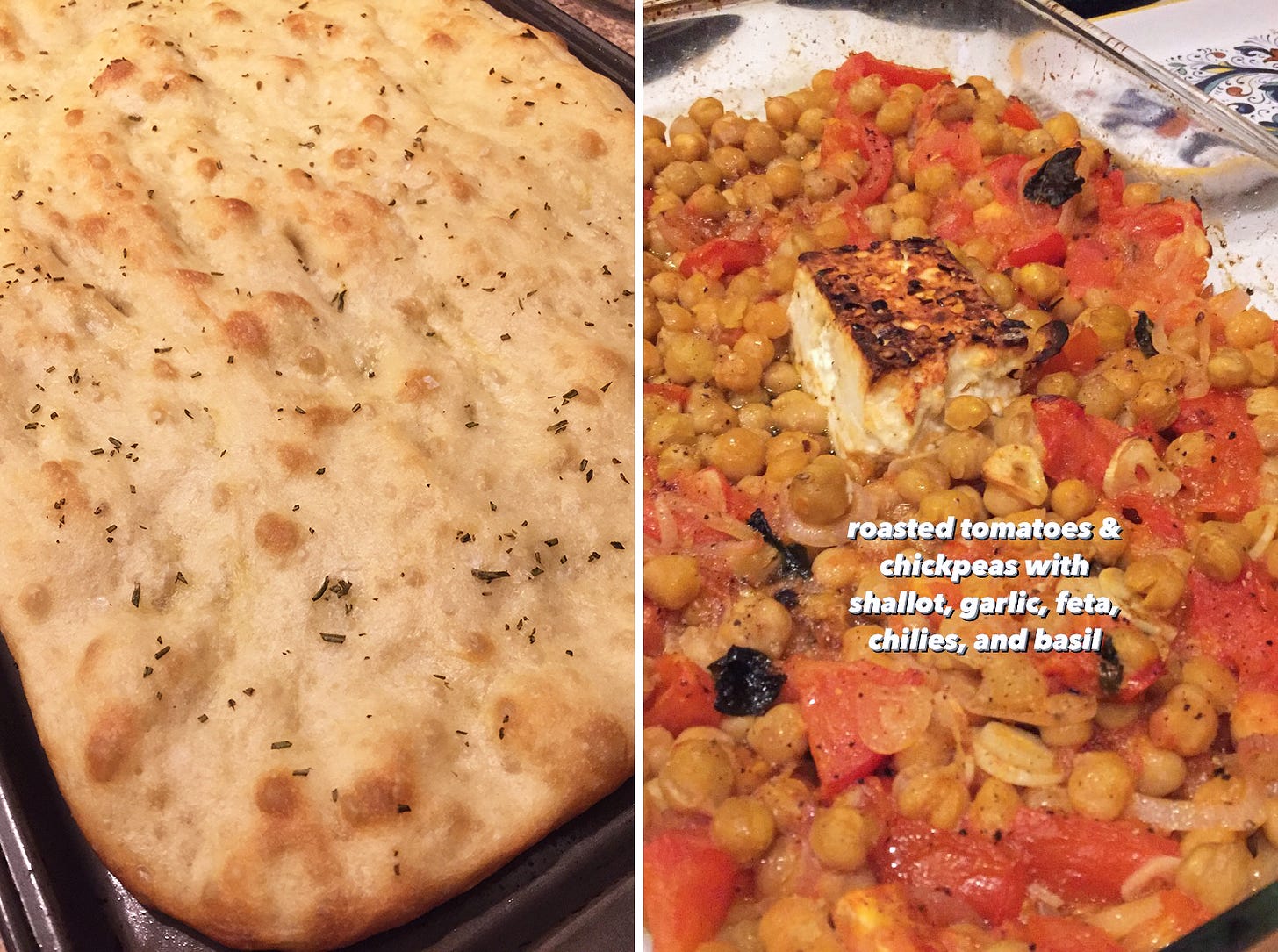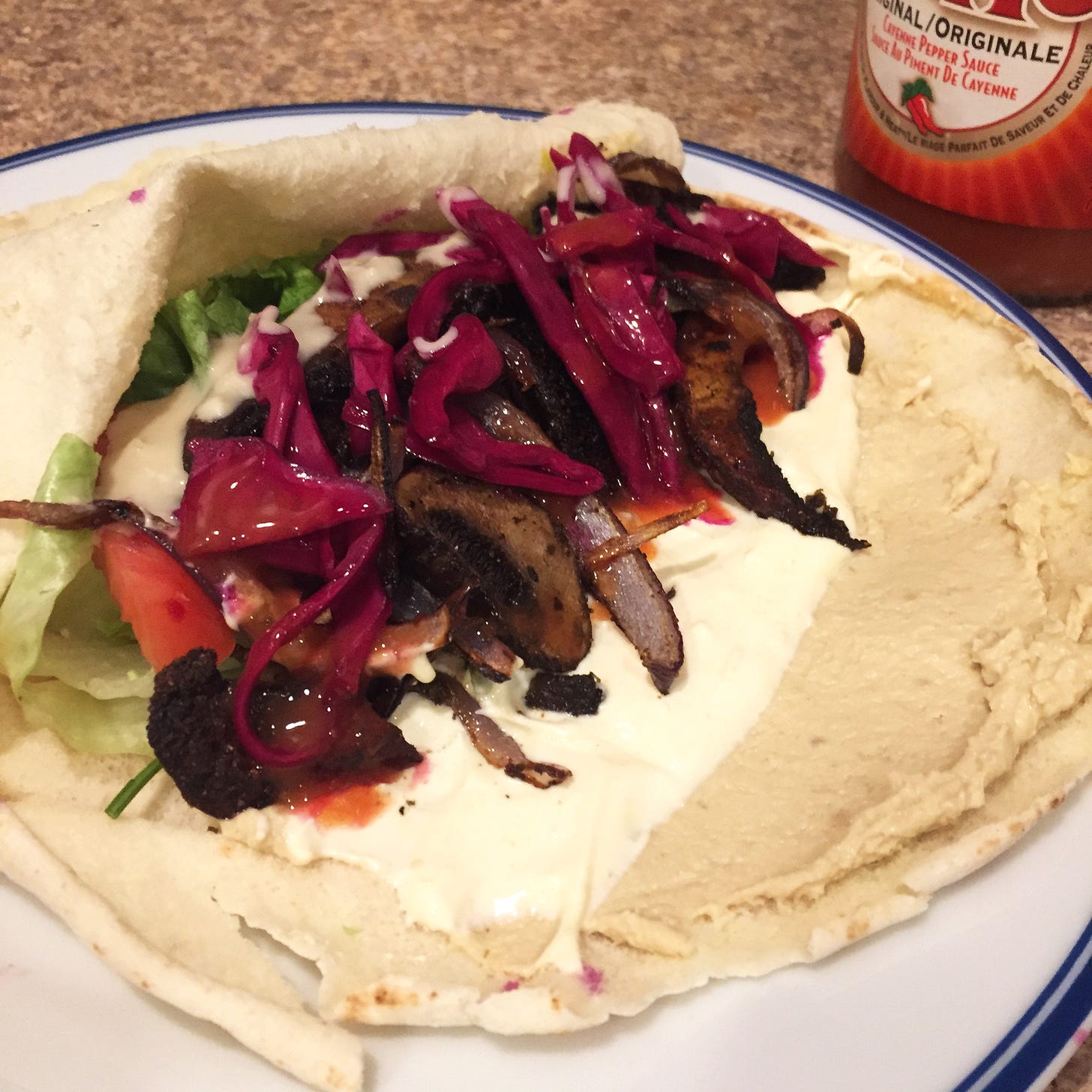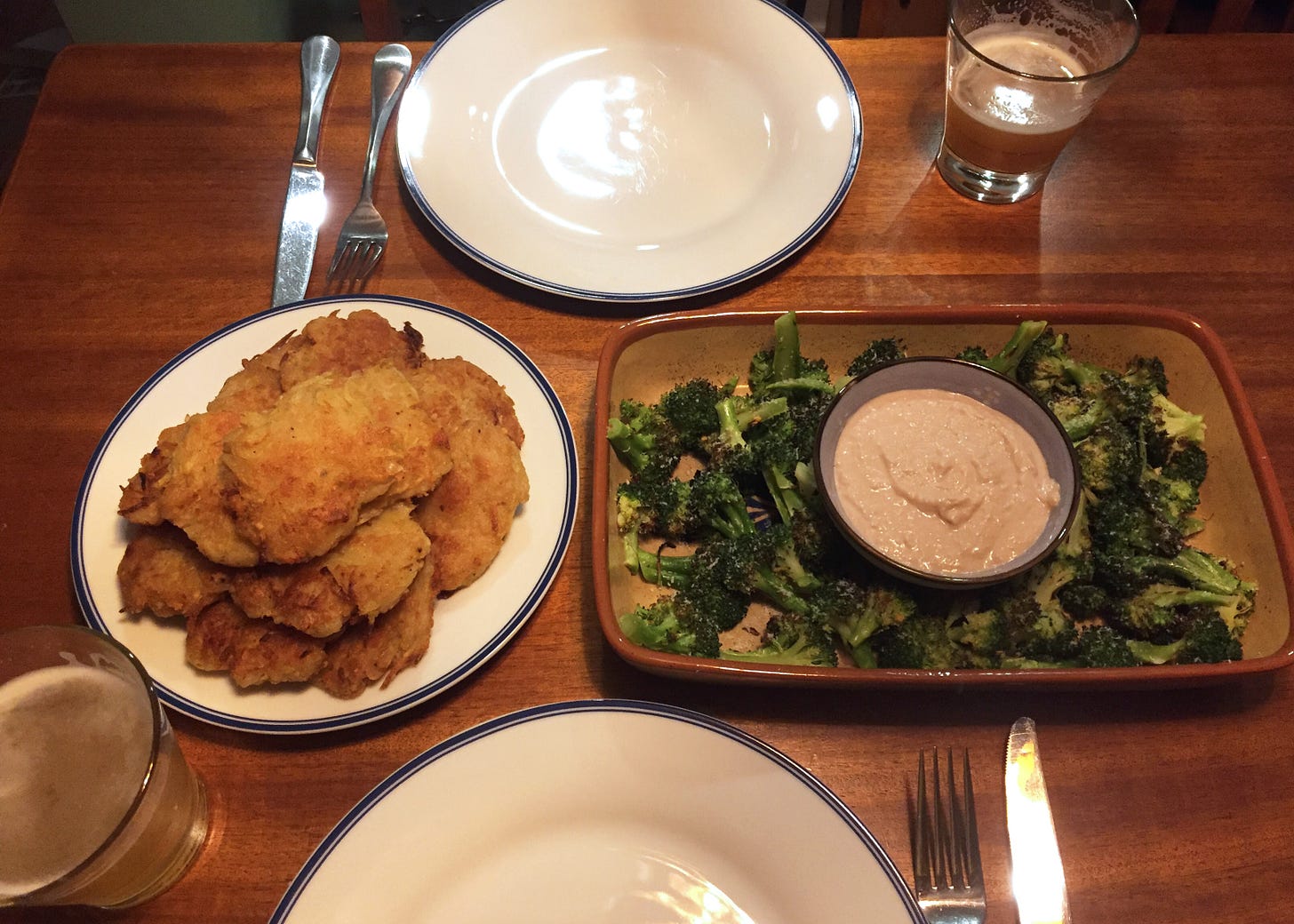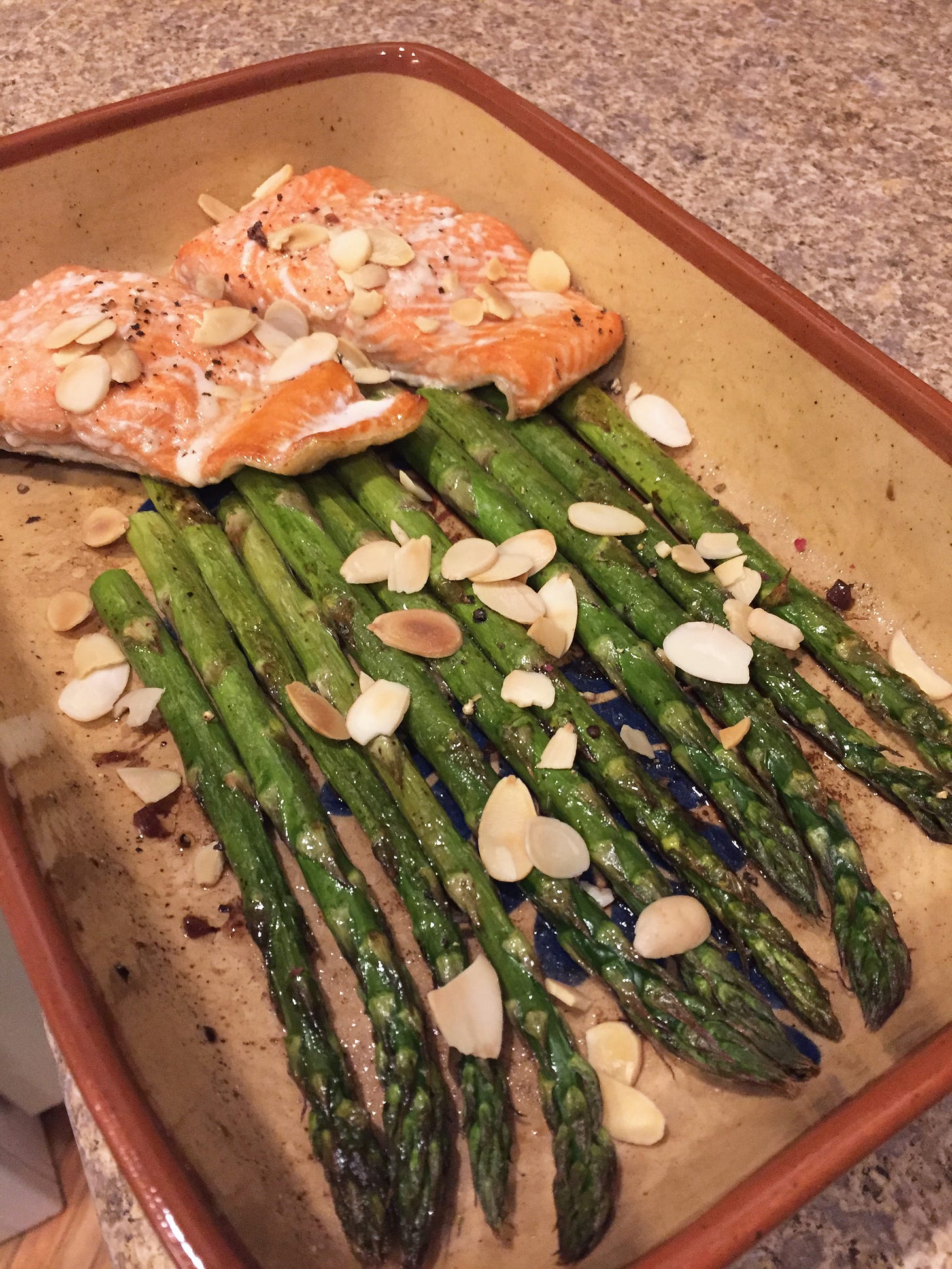Hello hello. I appear to have reached a new phase of pandemic brain, where my wires keep getting crossed about weird things. I toasted some sliced almonds as a garnish and referred to them as “almond seeds” when telling Jeff to grab them out of the pan. In the shower I squeezed some face wash into my hand, and then used it on my head like shampoo (I have not had hair since 2015). At work someone dropped a heavy box on the warehouse floor and I only barely stopped myself from saying “bless you”. Maybe it’s just the utter madness of this week, or possibly the utter madness of four months of days that all feel the same finally catching up with me.
But it seems like we can all feel that spring is on the way. So even as the painful reminders of normal things we were doing last year right before the pandemic hit show up in our social media memories, there’s a little ripple of hope under the surface as we think about future gardens, patio beers, and even just the simple joy of watching the sun set at 7pm instead of 5.
As an elder millennial, I would rather read 1000 words than watch an online video of any length, generally. The only tiktoks I see have either been vetted by a trusted friend, or popped up on my twitter timeline enough that I gave in and hit play. So when people were talking about a “viral baked feta pasta” I first felt affronted that I, an extremely online person who loves food, hadn’t heard of it. But then I discovered it was a tiktok, and I simply didn’t care anymore— there was no way I would watch a video in order to get inspiration to make pasta, essentially my default meal. I respect the creator for making something that looked tasty and easy enough to become a viral sensation, but I was sure I didn’t need a video to tell me that roasted tomatoes and cheese would make a good pasta sauce. However, because Smitten Kitchen almost never fails me, when Deb shared a non-pasta recipe inspired by the same, I was only too happy to try it out: roasted tomatoes & feta with chickpeas.
This is wonderfully versatile, as the recipe promises— you can make any number of additions or substitutions and still end up with something delicious. I had whole tomatoes, not cherry (people in the comments said they even used canned tomatoes with good results), so I cut just over a pound of them into large dice and seeded roughly half so I wouldn’t end up with too much juice. I had less feta than the recipe called for, so for extra substance I added a shallot and a handful of torn basil leaves to the roasting pan. Earlier in the afternoon I made the recommended half recipe of focaccia to go with it (bringing the number of bread products in our house up to four). It was, as you might predict, outstanding: lovely roasted garlicky tomatoes, salty cheese with caramelized edges, creamy soft chickpeas, and chewy bread to scoop it all up with. Jeff and I raved about it to each other, while sadly noting how nice a dish it would be to share with friends over a bottle of wine.

If you were vegetarian anytime from the late 90s until about 2015, and you ate at a pub, then you know the pain of the portobello mushroom burger. A distressingly widespread phenomenon (and often the only veg option other than salad), it was generally a slimy, uninteresting mess that manages to ruin both the mushroom and the entire concept of a burger. So understandably, as we all recover, portobello mushrooms have seemingly disappeared from most modern cookbooks and restaurant menus. However, I needed to use up some pitas without having to go to the store for the meat or cucumber that would lead me down the Greek route, and I found this portobello mushroom shawarma. Let this be the antidote to the cursed roasted vegetable sandwiches of our pasts, because it is fantastic.
Something I like about this recipe is that it doesn’t try to be exactly like the meat version, so that way it isn’t weird and disappointing the way a mushroom sandwich is when what you want is a burger. The smoky and spiced seasoning and meaty-with-bits-of-char texture of the mushrooms and onions is definitely evocative of shawarma, and I found this almost as filling as something from Babylon Cafe or Donair Town. I went for a bit more of a classic vibe with the toppings, using hummus, hot sauce, pickled cabbage, tahini-garlic sauce, tomatoes, and shredded lettuce, although I couldn’t resist making the turmeric yogurt, too. And I of course rolled it up instead of eating it open-faced as the recipe suggests, because what’s the point if not to have your final few bites be absolutely swimming in all the sauce that’s sunk to the bottom?
Ever since I received Six Seasons for my birthday, I’ve been wanting to try the charred broccoli with tonnato, but was having trouble building a meal around it since it seems more like an appetizer than a side. I decided to embrace it and make a dinner of appetizers, pairing it with latkes, which I had never made before. This was definitely something that necessitated the use of a food processor, both to shred the potato so as not to end up sobbing with exhaustion after grating potato by hand for 20 minutes, and to blend the tonnato. Tonnato had never really come up on my radar before receiving this book, and there’s no way to describe it without making it sound less good than it is: essentially, tuna made into a smooth dip using mayonnaise, olive oil, and lemon juice.
For a dinner that involved shallow frying, this was surprisingly quick. I mixed the batter and formed the latkes while the oil was heating, and prepared the broccoli in between flipping them, preheating the broiler in the meantime. When the final batch of latkes went into the pan, the broccoli went into the oven on a rimmed baking sheet with no oil. Once the broccoli was softened in places and blackened at the edges, I tossed it with olive oil, lemon juice, and chili flakes, and added some pecorino to serve. The tonnato was really delicious with the latkes, creating an experience similar to a tuna melt, and while the dip was good with the broccoli as well, Jeff and I both agreed the broccoli could also stand on its own as a nice acidic side dish.
Also this week, a hastily made kids’ menu dinner of a provolone and cheddar grilled cheese with a side of store brand tater tots when I came home hungry after a long day of work— let this inspire you to buy some frozen tater tots, and experience joy. And, to use up some dressings and marinades from the fridge, a mustard-marinated salmon with quinoa and roasted asparagus in brown butter vinaigrette. I didn’t bake anything this week due to a lack of free time, even though I desperately wanted to, so we’ve at least been working through some of our stash of Christmas chocolates.
Media:
This, by Miguel de Leon, seemed relevant: why aren’t restaurant workers being prioritized for the vaccine? I was getting mad again the other day about BC’s less than stellar vaccine rollout, and how non-medical essential workers have been placed in the “as more vaccines are available” priority of phase 3 (April to June), and while the article writer is in New York, the question of what “essential worker” really means still applies. Why use it at all if we don’t acknowledge their essentiality in any way other than requiring them to work and occasionally making half-assed appreciation posts on social media? Governments insist that restaurants can and should be open, but then do nothing to reduce the risk for workers, such as offering them hazard pay, or stronger community restrictions to reduce spread, or a vaccine priority that isn’t just “if we have some left over in June you can have it”.
“In the most Platonic ideal, restaurants serve communities. We encourage our neighbors to get to know each other. We provide business to a myriad of vendors and strengthen ties within the local economy. We celebrate all the happy occasions with our guests and commiserate with them when things are bleak. In the COVID era, every one of those acts of service is diminished, and that hospitality cannot be translated into something that is packaged and delivered.”
Restaurant workers have borne the brunt of the shifting policies, the government’s valuation of capitalism over public health and community safety, all while, presumably, enjoying a fraction of their usual take-home tips and next to none of the usual interaction and humanity that generally would make a tough job feel more bearable. And while we as citizens can’t fix our government’s broken priorities, we can at least try to show service workers that they matter: be patient, say thank you, wear your mask, and above all, tip well.
Thanks for reading— if you enjoyed this newsletter, please share it with someone new! I like providing this to you for free, but it does still involve time and effort, so donations I can use towards cookbooks or future treats are much appreciated. Finally, if you have never experienced the specific rage and/or disbelief associated with the New York Times’ Cooking section fucking up an iconic recipe, you’re about to.








